#allosaurids art
Explore tagged Tumblr posts
Text



I think I settled on a Silkwing design that I like
#wings of fire#allosaurids art#wof#silkwing wof#This is for my future wings of fire designs (I literally need to just tweak Admiral's design before he's good to go)
461 notes
·
View notes
Text

Allosaurus, the dinosaur ever. When you think of a basic carnivorous dinosaur you probably think of something along the lines of Allosaurus. Not as much of a grappler as Megaraptor, not as opposed to arm day as Carnotaurus. Not a bird or especially bird-like, nor as weird and derived as Spinosaurus. Visually, it is just a huge, bipedal, carnivorous lizard. It probably had light protofeather fuzz, but hair sims are hard on my computer. I think Allosaurus would be a cool antagonist for a Jurassic Park/Jurassic World movie or something ripping off of them, or some kind of humans vs dinos thing. Larger than any predator today, unlike raptors, but not as big and slow (and thus a more difficult target) than a rex or spino.
#paleontology#allosaurus#allosaurid#dinosaur#paleoart#dinosaur art#creature design#3d model#creature#theropod#jurassic dinosaurs#jurassic
27 notes
·
View notes
Text



Saurophaganax mug, 2024
sold
49 notes
·
View notes
Text

23 notes
·
View notes
Text

Allosaurus sketchbook doodle. If anything looks wonky it's because when I started it I didn't have a reference with me.
#art#my art#traditional art#graphite drawings#paleoart#paleontology#palaeoblr#archosaurs#dinosaurs#theropods#allosaurids#allosaurus#queue
53 notes
·
View notes
Text
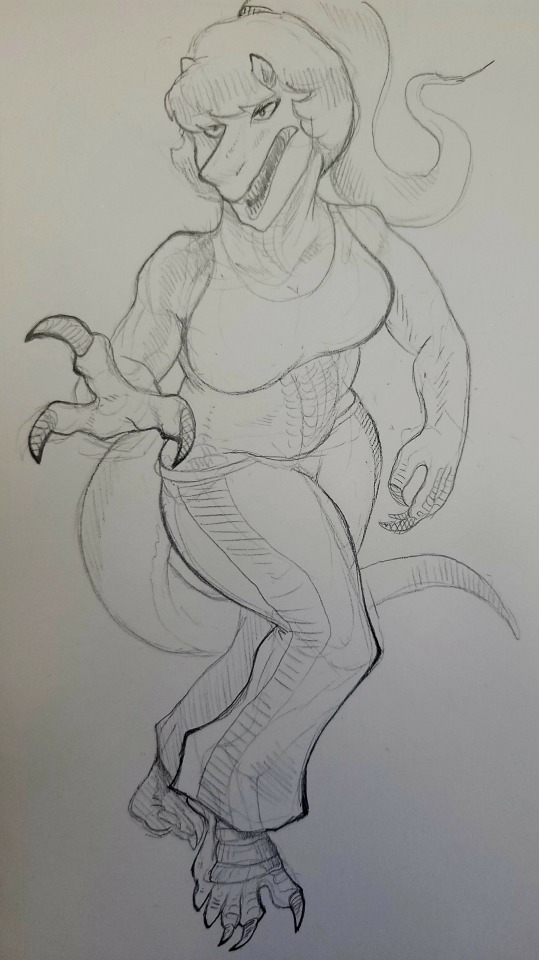
Big Ally, the big allosaurus lady
A proper character redesign of Ally that I feel better emphasizes the dinosauroid design philosophy I've wanted to capture.
#allosaurus lady#allosaurus#giantess#dinosaur girl#dinosauroid#dinosaur#original character#character concept#sketch#doodle#character art#art#artists on tumblr#artwork#allosaurid#theropod#theropoda
20 notes
·
View notes
Text
Metricanthosaurus Parkeri

Metricanthosaurus was a large metriacanthosaurus that dominated the area of what is now known as England 160 million years ago during the late Jurassic period. Being part of the larger group allosauridea along with allosauridae and carcharodontosauridae. Metricanthosaurus was discovered in the year 1871 in the oxford clay formation which is located in southeast england. Although metriacanthosaurus is a well known theropod, so far there has only been one specimen, which included an incomplete hip, a leg bone, and part of a backbone.
Stats:
Length: 30ft (9.1 m)
Height: 9ft (2.7 m)
Weight: 2,200 lb
Area: England, UK
Time: 161.2 - 155.7 mya
Formation: Oxford Clay Formation
Family: Metricanthosauridae
Species: M. Parkeri
For more information check out the video I made on it:
youtube
Reference:

#dinosaur#paleoart#dinos and comics#art#artwork#dinosaurs#allosaurid#theropod#allosaurus#jurassic world#dinosaur art#paleontology#paleoillustration#prehistoric#foryou#Youtube
26 notes
·
View notes
Text

Saurophaganax lives in reaction. First the election and now heard about the recent studies about S. maximus lives.
#my art#myart#dinosaur#paleoart#my drawings#dinosaurs#dinosauria#gag cartoon#allosaurus#saurophaganax#allosaurid#theropod#sketchbook#sketches#artists on tumblr
10 notes
·
View notes
Text
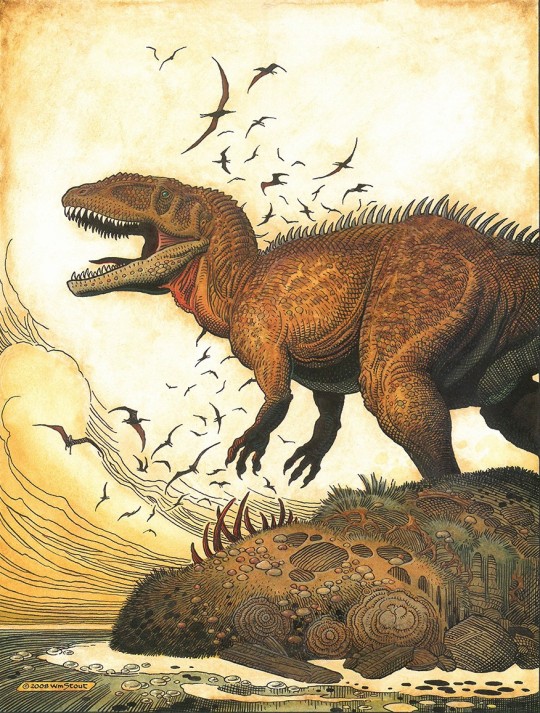
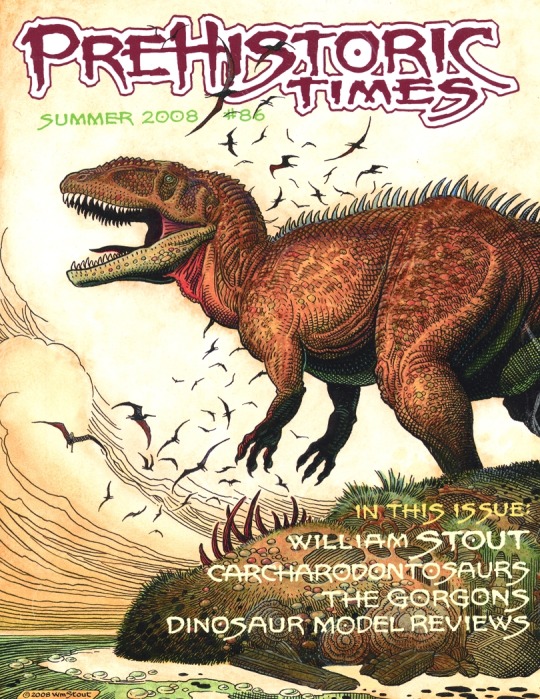
"..."SHARK-TOOTHED LIZARD," AN ALLOSAURID THEROPOD FROM MID-CRETACEOUS NORTH AFRICA."
PIC(S) INFO: Spotlight on the original painting and published cover art to "Prehistoric Times" Magazine #86 (Summer 2008), artwork by William Stout, featuring a Carcharodontosaurus “shark-toothed lizard”, an allosaurid theropod from mid-Cretaceous North Africa.
EXTRA INFO: Carcharodontosaurus is a representative of a family of dinosaurs that may well turn out to be the largest meat-eating dinosaurs of all.
Resolution at 876x1157 & 810x1048.
Sources: www.illustrationhistory.org/artists/william-stout & https://blog.everythingdinosaur.com/blog/_archives/2008/07/21/3803292.html.
#Palaeo Art#William Stout Art#Carcharodontosaurus#Prehistoric Art#Prehistoric#Prehistoric Times#Dino Art#Dinosaurs#Dinosaur Art#Allosaurid#Mid-Cretaceous#Shark-Toothed Lizard#Illustration#Prehistory#North Africa#Allosaurid Theropod#Dinos#Theropods#Prehistoric Times magazine#Magazines#Dinosaur#Prehistoric Times Magazine#William Stout Artist#William Stout#Mid-Cretaceous North Africa#Cover Art
2 notes
·
View notes
Text
Patreon request for @/rome.and.stuff (Instagram handle) - Saurophaganax maximus

Saurophaganax maximus was an allosaurid from Late Jurassic Oklahoma, USA. Reaching 10.5 metres (34 ft) in length and weighing 2.7–3.8 metric tons (3.0–4.2 short tons), it was the largest terrestrial carnivore in North America during the Late Jurassic, bigger than both its contemporaries Torvosaurus tanneri and Allosaurus fragilis. Some scientists argue that it was in fact a species of Allosaurus (making it “Allosaurus maximus”), but possible Saurophaganax material found in New Mexico may shed light on the genus. With a name meaning "lord of lizard-eaters", it was likely the apex predator of its environment.

Found in the Brushy Basin member of the Morrison Formation, Saurophaganax would have had a multitude of prey species to choose from. These ranged from small ornithischians like Camptosaurus, Dryosaurus, and Fruitadens, armoured thyreophorans like Gargoyleosaurus, Mymoorapelta, Hesperosaurus, and Stegosaurus, to a diverse array of giant sauropods like Haplocanthosaurus, Amphicoelias, Apatosaurus, Brontosaurus, Barosaurus, Diplodocus, Kaatedocus, Supersaurus, Brachiosaurus, and Camarasaurus. Small theropods included Coelurus, Hesperornithoides, Tanycolagreus, and Ornitholestes.
The Morrison didn’t only have a large diversity of dinosaurs. Many pseudosuchians lived alongside Saurophaganax, from the skittering, long-legged Hallopus to the more aquatic Amphicotylus. Pterosaurs were uncommon but widespread, and included rhamphorhynchids like Harpactognathus and ctenochasmatids like Kepodactylus. Other reptiles like rhynchocephalians, lizards, basal snakes, and turtles were common as well. Many cynodonts, mostly early mammals, also called the Morrison home.
The Morrison Formation was also rife with other large predators that could have been either competitors or prey to Saurophaganax themselves. These include the previously mentioned Allosaurus and Torvosaurus, as well as the smaller Ceratosaurus nasicornis and Marshosaurus bicentesimus. As Allosaurus seemed to be the most numerous predators in this formation, they may have been successful pack hunters while Saurophaganax was more of a “lone wolf.” Its remains are much rarer than that of its smaller, lither cousins, and it was likely an opportunistic scavenger and hunter, needing much more food to power its larger frame.

This art may be used for educational purposes, with credit, but please contact me first for permission before using my art. I would like to know where and how it is being used. If you don’t have something to add that was not already addressed in this caption, please do not repost this art. Thank you!
#Saurophaganax maximus#Saurophaganax#allosaurid#allosauroid#theropods#saurischians#dinosaurs#archosaurs#archosauromorphs#reptiles#SaritaDrawsPalaeo#Morrison Formation#Late Jurassic#North America
16 notes
·
View notes
Text

Allosaurus.
#art#digital art#illustration#paleo#palaeoblr#paleoart#prehistoric#reptile#archosaur#dino#dinosaur#dinosaurs#saurischian#theropod#allosaurid#allosaurus#extinct#extinct animals#dinovember#dinovember2022#stripey creachur
92 notes
·
View notes
Text
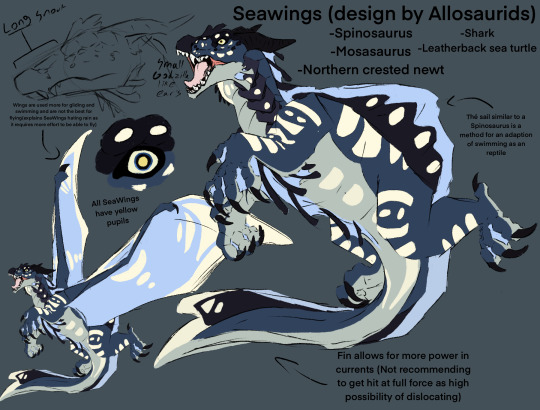
I've got fish dragon's in my brain
#wings of fire#Seawings#wof headcanon#I've got more headcanons#but I don't want to type anymore lmaof#allosaurids art
619 notes
·
View notes
Photo

Allosaurus doodle from memory
#paleo#paleoart#paleontology#dinosaurs#dinosaur#allosaurus#allosaurid#paleomedia#artists on tumblr#artist#digital artist#digital art
24 notes
·
View notes
Photo

Allosaurus
took about 6 hours or something it was 🥴 🥴 🥴 fun 🤪 🤪 🤪
8 notes
·
View notes
Text
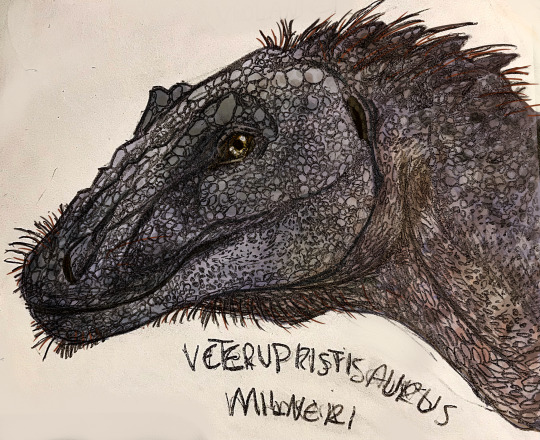
Colors based on the European Honey Buzzard
Veterupristisaurus: Old shark lizard.
Milneri: honouring paleontologist Angela Milner
-Veterupristisaurus was a member of the Charcharodontisauridae family from Jurassic Tanzania
-the holotype contains an isolated caudal vertebra, two posterior partially fused middle caudal vertebrae, and an anterior caudal vertebrae. Basically just a bunch of pieces of the spinal column for those who aren’t proficient in anatomical terms.
-these continue to be the only bones found.
-the animal was originally named as Ceratosaurus, but it has been decided they are different animals.
-even though there’s been a lack of bones found, there is no current debate on whether Veterupristisaurus is synonymous with another non-avian dinosaur.
#dinosaur#dinosaur art#paleo#paleontology#paleontologist#paleoart#charcharodontisaurid#charcharodontisauridae#allosaurid#allosauridae#allosaurini#Veterupristisaurus#Veterupristisaurus milneri#angstybreadstyx art
66 notes
·
View notes
Video
tumblr
Short video showing the changes I made to my original Allosaurus to his revised, digital version 🎨🦕 fixes a lot including making him less shrink-wrapped and just personal aesthetic changes. http://instagram.com/mainstreamreptile
#sizzyARTS#dinosaur#allosaurid#allosaurus fragilis#paleoart#dinosaur art#procreate#ipad pro#everybody please like my art#hahaaa
37 notes
·
View notes